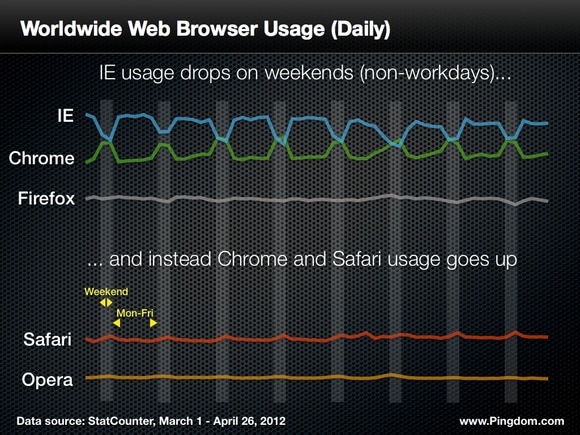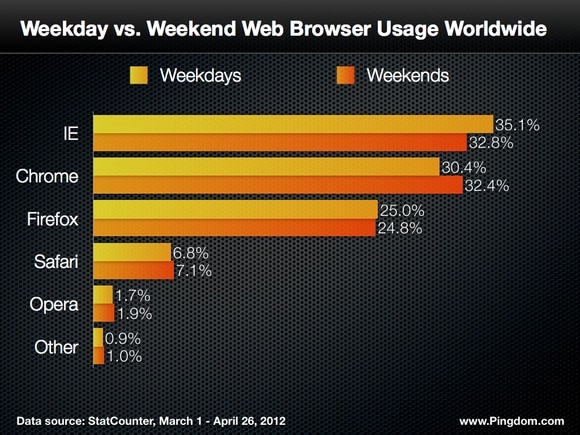 We’re going to show you a chart that confirms what some of you already suspected, and Microsoft probably isn’t too happy about. A lot of people only use Internet Explorer because they have to at the office, but at home they use a different web browser.
We’re going to show you a chart that confirms what some of you already suspected, and Microsoft probably isn’t too happy about. A lot of people only use Internet Explorer because they have to at the office, but at home they use a different web browser.
On workdays around 35.1% of all web browsing is done with IE. On weekends that number consistently drops to around 32.8%.
So if IE usage dips every weekend, which browsers do people use instead? For the most part, Google’s Chrome. On weekends, IE and Chrome usage is pretty much neck and neck these days. You could say that for home use, they are now on equal terms.
There are also noticeable increases for Apple’s Safari during weekends, presumably made up of people who use Macs at home and PCs at work. Opera also sees an increase on weekends. We couldn’t find a clear pattern for Mozilla’s Firefox.

The above chart shows daily usage, which was the most detailed measurement we could get our hands on.
Worth noting is that if anyone were to make an even more detailed chart completely isolating office hours and at-home hours, the differences seen above would be even more pronounced. As it is now, some home usage is naturally included in the weekday stats.
Still, just dividing weekdays and weekends, we get a clear pattern. Averaging the weekdays and weekends for the period March 1 – April 26 (same as for the first chart), we get the following:

So how about individual countries? As you can imagine, in some countries the pattern is very pronounced, even more so than what you can see here, while in some it’s not quite as noticeable. And in some countries this pattern doesn’t show at all.
The trend when you view the world as a whole, though, is impossible to ignore. If IE’s hold on the workplace were to lessen, it would be in serious trouble. It’s already lost a lot of ground.
Final note: Since this article shows web browser “market share,” some of the increase shown for other browsers is simply an effect of less IE usage.
Data source: StatCounter, based on visitor stats from 3+ million websites.
























